Although the use of aluminum foil had been experimented with in the late 1800s, in the middle of the 1930s the first sun helmets came into use that featured a layer of aluminum foil inside the dome as a protection against the heat. That foil became a standard in the production both of the cork, and later in the war, the more economic pressed felt version of the Wolseley helmet. Besides these “nameless” foils, a brand existed, that that can be found in military and civil helmets alike: the “Coolair Aluminex.” Here are some variations of branded aluminum foil sun helmets.
Examples are shown in Stuart Bates’ book, The Wolseley Helmet in Pictures, including an experimental one with a visor. This helmet has a label printed in blue letters directly on the foil that reads. “Royal Letters Patent No 397985 7/9/33 10°-15° Cooler. Recommended by the Tropical Research Department.” Due to the brass wheel, to which the ventilator button on top is fixed, the label has a hole in the middle. Not unusual for all kinds of paper, leather or fabric labels that one can often find attached to that very place in a sun helmet.
Now, the same printed blue label appears on the alumium foil of two helmets in my collection – but with an alteration. For there is no brass wheel and the foil is punctured but only with comparatively small eyelets – typical, by the way, for helmets using aluminium foil, as Stuart Bates states in his book – some letters of a brand in the centre of the label can be seen. Unfortunately not completeley, but “Aluminex” is clearly readable.
There are two more stamps “The Monarch” and “Congo Camp Bruxelles” as well as the stamp “Made in England.” Inside the white helmet, the label is much more readable than that in the brown helmet. In fact, the “Congo Camp Bruxelles” can only be recognized with the help of the other. Both turned up in 1986 as a pair at a German antique dealer near the Belgian border and it can be presumed that they had the same previous owner.
Bruxelles? A patent from 1933? Was the aluminium foil in tropical helmets a Belgian invention? Of, course, “Made in England” or “Tropical Research Department” seems to point in another direction (Stuart Bates has found an English patent #397985 by Guy Pascoe Crowden of 1933), but especially French produced helmets often use a kind of extraordinary English wording, like “Superior Royal Quality Helmet” or “Adopted by the Royal Government” that was invented by fanciful marketing strategists, to make their hats more exclusive.
I have never seen another example of a branded, aluminium foil helmet and it took me two more decades to discover the next part of the truth. First with spotting the label known to me again on the experimental helmet in Stuart Bates´ book, then finally with two recent finds.
This was the first helmet encountered with a label free of any additions like names of towns. Just the plain blue stamp – but again with a partly destroyed aluminum foil and therefore unreadable. Anyway – there was no more relationship to Belgium. This one looked plainly British.
Even more British, of course, the next find was a Wolseley. Though equipped with only a threefold puggaree, as is more typical for other rank´s helmets of the Second World War, this example of a Wolseley is an officer´s private purchase one, as can be seen by the net application on the sweat band and the leather edge around the brim. There is a Royal Air Force flash. Personally I do never really trust any badge or cloth that I find attached to a helmet, for I think for whoever sells it, the temptation to add history or provenance to a helmet is very great.
Nevertheless, the catalogue of the Imperial War Museum in London, Number UNI 7960, shows a similar helmet with the Royal Air Force flash. Was that shape probably typical for the RAF?
Anyway, that helmet first showed me a complete, readable example of the brand. And here we have the “Coolair Aluminex.”
Was that kind of helmet really produced in Belgium? I do not believe so any more. “Congo Camp” in Brussels was probably only the retailer of – and here we have another nice example of that English wording – “The Monarch.” But if this Monarch was sold for military or civilian use, is difficult to decide. My Coolair Aluminex Wolseley has – besides the label on the foil – no manufacturer/retailer mentioned. The IWM states “HOBSON & SONS LEXINGTON ST. LONDON CONTRACTORS AND MANFACTURERS” as stamped in their helmet.
Was Hobson perhaps the manufacturer of all these helmets? Another possibility could be that someone only produced the aluminum foil, labeled it and sold it to many different manufacturers, to be attached to an otherwise already finished helmet. That would explain why the foil was not properly worked round the brass wheel and indeed fixed with it, but only provided with eyelets. Besides, aluminum foil is not a traditional material for a hatter – another good reason to out-source this part of manufacture. On the other hand, all four examples shown here have the “Comfortease” stamp on the sweat leather headband. Again the question: The same manufacturer of the whole helmet or different ones for the corpus and “mobile” parts? One will have to collect more information, before that question can finally be answered.
Though not a Coolair Aluminex, this, another aluminum foil example is interesting, because it provides information on the manufacturer as well as on the retailer. This helmet was made for Whiteaway & Laidlaw, a renowned warehouse chain in India, manufactured by, despite the missing D at the end can clearly be identified, as Townend London.
Usually helmets made from cork are not difficult to distinguish from those made of pressed felt. A felt helmet has the distinct furry nature to its interior and always has the ventilator cap secured by tabs which are bent, often through a circular plate. In this case, the felt surface was completely covered with fabric on top and underneath the brim, in addition to the foil inside the dome, which gave no view to the ventilator. This example was not too kindly treated. Luckily, because the damage reveals the material as being pressed felt. This, and the foil, could be an indication of a production in the later stages of the war. For this is not a regulation helmet, we learn that civilian manufacturers had to cope with the shortness of supply as well as the government.
Last but not least, this greyish Bombay Bowler must have been produced after 1947, for a dealer in Pakistan is mentioned on the label. And indeed, newspapers glued on the inside to stiffen the pith help to date the helmet to the beginning of the 1950s. The inlay is folded in a way that is typical for these helmets, as they are produced the same way today. But I have not seen another example using aluminum foil.
One final question: Was aluminum foil of any use at all? If people in the mountains are rescued out of snow ravines, they are at first wrapped in aluminium foil, for that reflects the warmth left even in an undercooled body and helps best to stay alive. Would foil in a sun helmet really protect the head against heat? Or rather help to boil it?
The article THE TRANSFER OF HEAT THROUGH SUN HELMETS by P. S. H. Henry and W. H. Rees from the British Cotton Industry Research Association, Manchester, gives a detailed overlook about the intense scientific research that was done on that subject during wartime. Through written for physicians, it contains very interesting information for the sun helmet collector, on how people thought to optimize head protection against tropical head – including the use of aluminum foil.
(LINK http://europepmc.org/articles/PMC1035796/pdf/brjindmed00264-0019.pdf)
Roland Gruschka

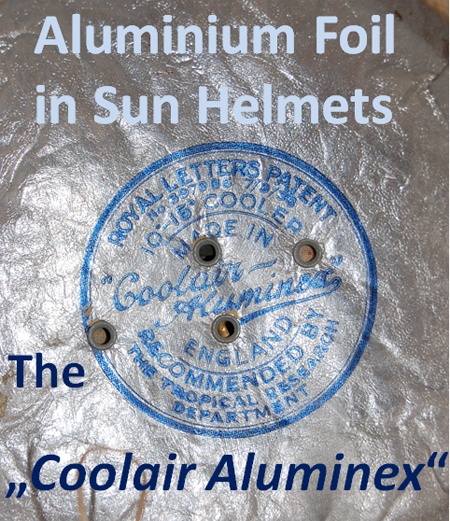
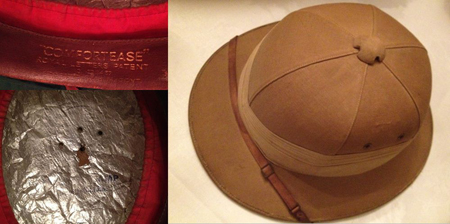
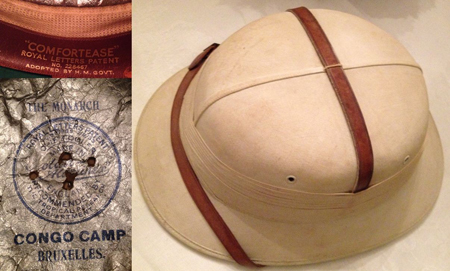
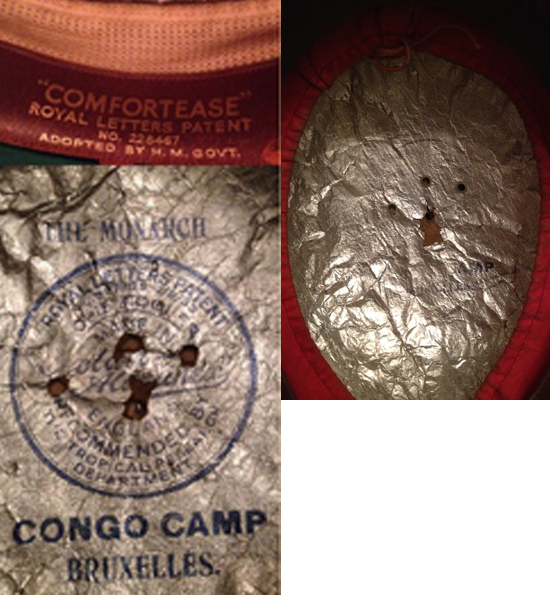
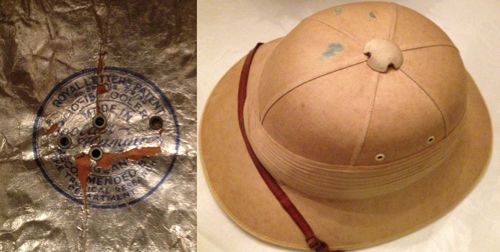

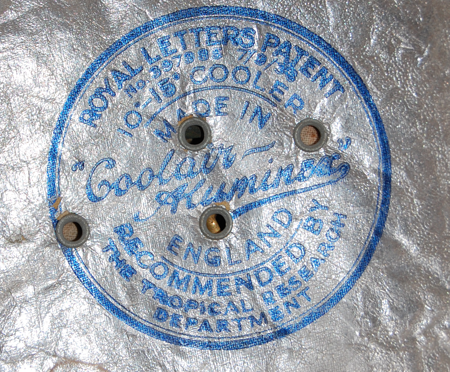
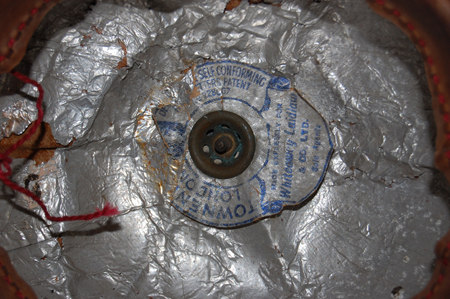
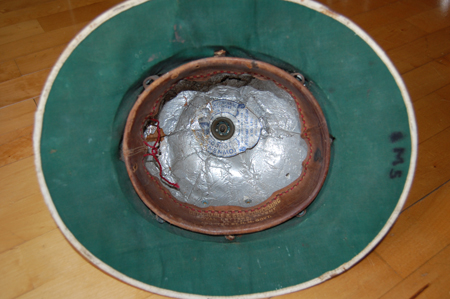
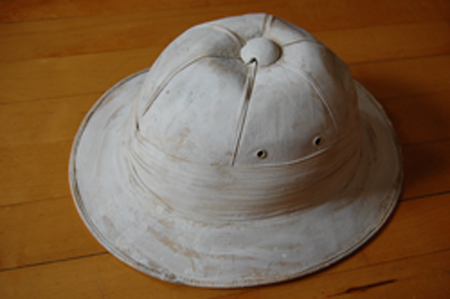
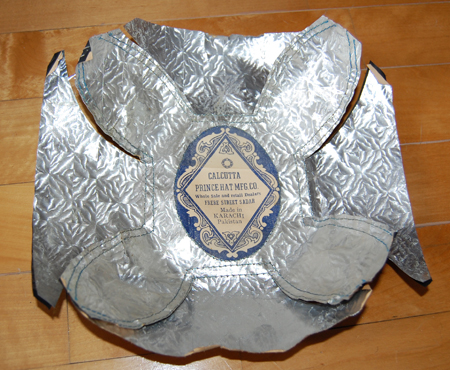
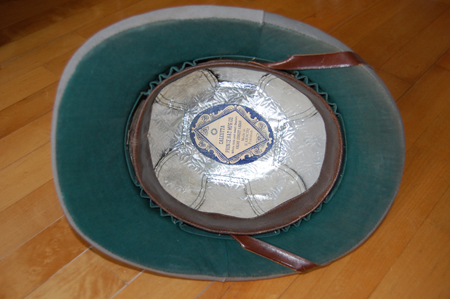
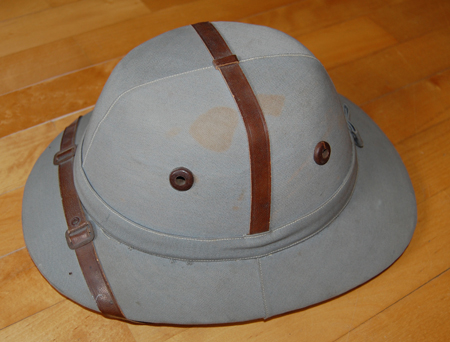
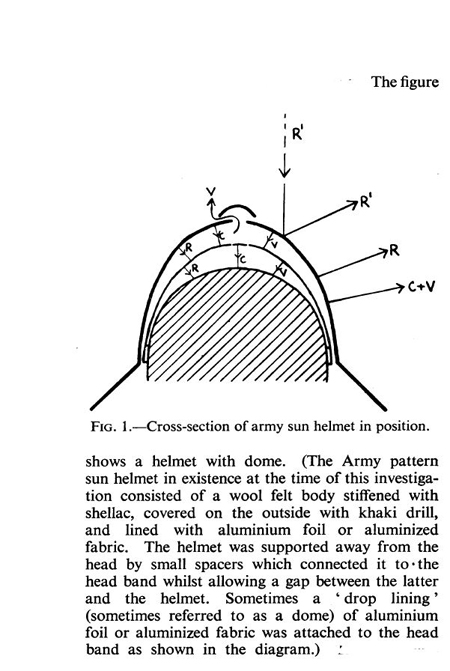
i have a hat of your company it was of my grandfathers i will want to know whats the value its new.
thanks very much
regards.
Hi Roland. I have just bought, saved i do believe, a Pith helmet. Your article on aluminum helped me identify it as worth saving. If you would like I can send you photos.